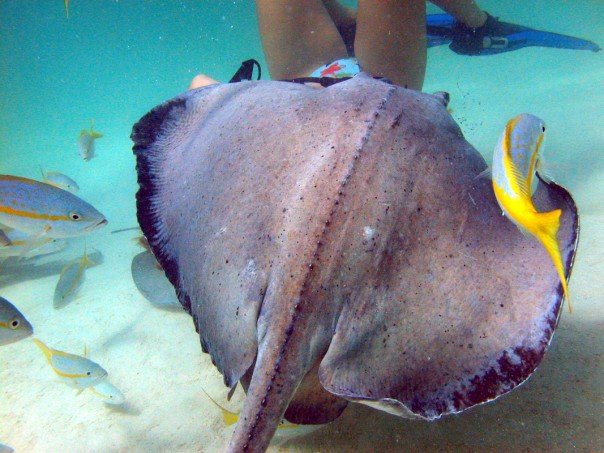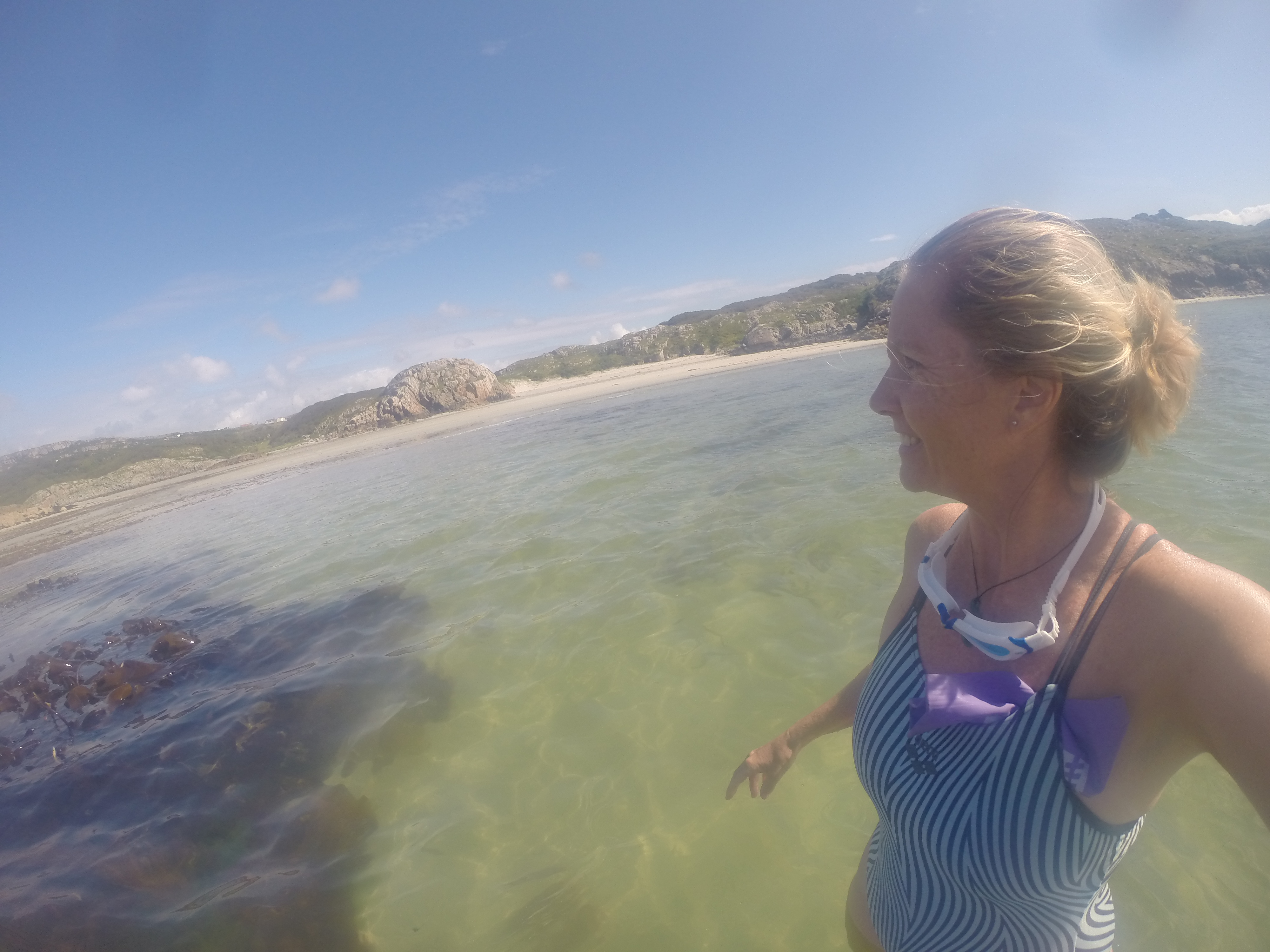Imagine your first moment in the tropics you arrive at sunset to your triathlon and check out the blue lagoon or ocean where the dozing sun paints a pink hue all over… the white sand is turning a greyish-pink colour.
You leave your luggage in the hotel, and stroll down to water’s edge, and let the shallow water up to your hips lap up against you and soothe those aching thighs after a long flight… you flop down into the warm water, and soak up the remainders of the afternoon sun, and experience what feels like your first moment of relaxation after months of training. You lie back, floating, mesmerised… you decide to go and get a sort out your kit for few days leading up to the race. You feel something waft across your leg which then proceeds to feel like you have your finger stuck in an electrical socket!
Here are a list of recommendation from Divers Alert Network on what do you if you are stung in the water.

JELLYFISH STINGS
These also include stings from fire coral, hydroids, and anemones. The stings occur when the victim comes into contact with the creature’s tentacles or other appendages, which carry small stinging cells.
Depending on the species, size, geographic location, time of year and other factors, stings can range in severity from mild burning and skin redness to excruciating pain and severe blistering with generalized illness (nausea, vomiting, shortness of breath, muscle spasm and low blood pressure). Broken-off tentacles that are fragmented in the surf or washed up on the beach can retain their toxicity for months and should not be handled, even if they appear to be dried out.
The dreaded box jellyfish (Chironex fleckeri) of northern Australia contains one of the most potent animal venoms known to man. A sting from one of these creatures can induce death in minutes from cessation of breathing, abnormal heart rhythms and profound low blood pressure (shock).
Treatment
BE PREPARED TO TREAT AN ALLERGIC REACTION FOLLOWING A JELLYFISH STING. If possible, carry an allergy kit, including injectable epinephrine (adrenaline) and an oral antihistamine. The following therapy is recommended for all unidentified jellyfish and other creatures with stinging cells:
1. If the sting is from the box jellyfish (Chironex fleckeri), immediately flood the wound with vinegar (5 percent acetic acid). Keep the victim still. Continuously apply vinegar. Bring the victim to medical attention. Allow the vinegar to soak the tentacles or stung skin for 10 minutes before removing adherent tentacles. In Australia, surf lifesavers (lifeguards) may carry antivenin, which is given as an intramuscular injection a first aid measure.
2. For all other stings, apply a topical decontaminant if (e.g., vinegar, isopropyl [rubbing] alcohol, one-quarter-strength household ammonia or baking soda) liberally onto the skin. (Some authorities advise against the use of alcohol because some nematocysts may discharge because of this chemical’s application). Apply the decontaminant for 30 minutes or until pain is relieved. Do not apply any organic solvent, such as kerosene, turpentine or gasoline. Until the decontaminant is available, rinse the skin with sea water. Do not simply rinse the skin gently with fresh water or apply ice directly to the skin. A brisk freshwater stream (forceful shower) may have sufficient force to physically remove the microscopic stinging cells, but non-forceful application is more likely to cause the cells to fire, increasing the envenomation.
3. After decontamination, apply a lather of shaving cream or soap and shave the affected area with a razor.
4. Reapply the primary decontaminant for 15 minutes.
5. Apply a thin coating of hydrocortisone lotion (0.5 to 1 percent) twice a day. Anesthetic ointment (lidocaine or benzocaine preparations) may provide short-term pain relief.
6. If the victim has a large area involved (entire arm or leg, face, or genitals), is very young or very old, or shows signs of generalized illness (nausea, vomiting, weakness, shortness of breath or chest pain), seek help from a doctor. If a person has placed tentacle fragments in his mouth, have him swish and spit whatever potable liquid is available. If there is already swelling in the mouth (muffled voice, difficulty swallowing, enlarged tongue and lips), do not give anything by mouth, protect the airway and rapidly transport the victim to a hospital.
(To pee or not to pee? )
“A sting from a jellyfish can be extremely painful, but trying to treat it with urine isn’t going to make your day any better,” said Joe Mulligan, head of first aid at the British Red Cross.
“Urine just doesn’t have the right chemical make-up to solve the problem,” he added.
Coral Scrapes
Q: Elkhorn coral scrape and sting. Slow healing. What to do?
A: Coral scrapes are the most common injuries from marine life incurred by divers and snorkelers. The surface of coral is covered by soft living material, which is easily torn from the rigid (abrasive) structure underneath, and thus deposited into the scrape or cut. This greatly prolongs the wound-healing process by causing inflammation and, occasionally, initiating an infection. Cuts and scrapes from sharp-edged coral and barnacles tend to fester and take weeks or even months to heal.
Treatment
1. Scrub cut with soap and water, then flush with water.
2. Flush wound hydrogen peroxide in water. Rinse again with water.
3. Apply a thin layer of bacitracin, mupirocin (Bactroban), or similar , and cover with a dry, sterile, non-adherent dressing. Thereafter, it should be cleaned and re-dressed twice a day.
Note: if wound develops a pus-laden crust, use “wet-to-dry” dressing changes to remove the upper non-healing layer in order to expose healthy, healing tissue. This is done by putting a dry sterile gauze pad over the wound (without any underlying ointment), soaking the gauze pad with saline or a dilute antiseptic solution (such as 1- to 5-percent povidone-iodine in disinfected water), allowing the liquid to dry, and then “brutally” ripping the bandage off the wound. The dead and dying tissue adheres to the gauze and is lifted free. The pink, slightly bleeding tissue underneath should be healthy and healing. Dressings are changed once or twice a day. Wet-to-dry dressings are used for a few days, or until they become non-adherent. At that point, switch back to #3 above.
4. If wound shows sign of infection (extreme redness, pus, swollen lymph glands), the injured person should be treated with an antibiotic by a qualified health professional, taking into consideration the possibility of a Vibrio infection. Vibrio bacteria are found more often in the marine environment than on land, and can rapidly cause an overwhelming illness and even death.
Coral poisoning occurs if coral abrasions or cuts are extensive or are from a particularly toxic species. Symptoms include a wound that heals poorly or continues to drain pus or cloudy fluid, swelling around the cut, swollen lymph glands, fever, chills and fatigue. If these symptoms are present, the injured person should see a physician.
SEA URCHIN SPINE PUNCTURES – easily done when walking into the water or near jetties
Q: 15 black sea urchin spines lesion of forearm. Swelling of wrist. What to do?
A: Some sea urchins have sharp venom-filled spines that can easily penetrate the skin. Others (found in the South Pacific) may have small appendages (pincers) that grasp victims and inoculate venom. Sea urchin stings are painful. If a person receives many wounds simultaneously, the reaction may be severe and cause extreme muscle spasm, difficulty in breathing, weakness and collapse.
Treatment
1. Immerse the wound in hot water to tolerance (43.3 to 45 C). This frequently provides pain relief. Other field remedies, such as application of vinegar or urine, are less likely to diminish the pain. If necessary, administer pain medication.
2. Carefully remove any visible spines. Do not dig around in the skin to try to fish them out – this risks crushing the spines and making them more difficult to remove. Do not intentionally crush the spines. Purple or black markings in the skin immediately after a sea urchin sting do not necessarily indicate the presence of a retained spine fragment. The discoloration more likely is dye leached from the surface of a spine. The dye will be absorbed over 24 to 48 hours, and the discoloration will disappear. If there are still black markings after 48 to 72 hours, then a spine fragment is likely present.
3. If the sting is caused by a species with pincer organs use hot water immersion, then apply shaving cream or a soap paste and shave the area.
4. Seek the care of a physician if spines are retained in the hand or foot, or near a joint. They may need to be removed surgically, to minimize infection, inflammation and damage to nerves or important blood vessels.
5. If the wound shows sign of infection (extreme redness, pus, swollen regional lymph glands) or if a spine has penetrated deeply into a joint, the injured person should be treated with an antibiotica by a qualified health professional, taking into consideration the possibility of a Vibrio infection.
6. If a puncture in the palm of the hand results in a persistent swollen finger(s) without any sign of infection (fever, redness, swollen lymph glands in the elbow or armpit), then it may become necessary to treat the injured person with a seven- to 14-day course of a non-steroidal anti-inflammatory drug (e.g., ibuprofen) or, in a more severe case, oral prednisone, a corticosteroid medication.
LIONFISH, SCORPIONFISH & STONEFISH ENVENOMATIONS – usually found on the sea floor, or laid on reefs (don’t walk on the coral!)
 Q: Lionfish sting on fingers, which look swollen and blistered. What to do?
Q: Lionfish sting on fingers, which look swollen and blistered. What to do?
A: Lionfish (as well as scorpionfish and stonefish) possess dorsal, anal and pelvic spines that transport venom from venom glands into puncture wounds.
Common reactions include redness or blanching, swelling and blistering (lionfish). The injuries can be extraordinarily painful and occasionally life-threatening (in the case of a stonefish).
Treatment
Soaking the wound in hot water to tolerance (43.3 to 45ø C) may provide dramatic relief of pain from a lionfish sting, is less likely to be effective for a scorpionfish sting, and may have little or no effect on the pain from a stonefish sting, but it should be done nonetheless, because the heat may inactivate some of the harmful components of the venom.
If the injured person appears intoxicated or is weak, vomiting, short of breath or unconscious, seek immediate advanced medical care.
Wound appropriate should include a topical antiseptic (such as silver sulfadiazene cream or bacitracin ointment) and daily dressing changes. A scorpionfish sting frequently requires weeks to months to heal, and the attention of a physician. There is an antivenin available for the sting of the dreaded stonefish.
STINGRAY ENVENOMATION – shuffle your feet!
Q: Non healing sting-ray wound of a foot. What to do?
A: The stingrays’s stingers are supplied with venom, so that the injury is both a deep puncture or laceration and an envenomation. The pain can be excruciating and accompanied by bleeding, weakness, vomiting, headache, fainting, shortness of breath, paralysis, collapse and occasionally, death.

Treatment
1. Rinse the wound with clean water. Immediately immerse the wound in hot water to tolerance (43.3 to 45 C) for some pain relief. It may be necessary to soak the wound for 30 to 90 minutes. Gently extract any obvious piece of stinger.
2. Scrub the wound with soap and water. Do not try to close it, doing so could promote a serious infection by “sealing in” harmful bacteria.
3. Apply a dressing and seek medical help. If more than 12 hours will pass before a doctor can be reached, start the injured person on an antibiotic (ciprofloxacin, trimethoprim-sulfamethoxazole or doxycycline) to oppose Vibrio bacteria.
4. Administer pain medication sufficient to control the pain.
Prevention of Stingray Injuries
1. Always shuffle your feet when wading in stingray waters.
2. Always inspect the bottom before resting a limb in the sand.
3. Never handle a stingray unless you know what you are doing.
SEA BATHER’S ERUPTION, SEAWEED DERMATITIS & SWIMMERS ITCH
Q: Total body tingling followed by stinging underneath swimming suit while swimming through a swarm of small brown blobs. Residual red skin rash, sleep troubles, tiredness. What to do?
A: Sea Bather’s Eruption occurs in sea water and involves predominately bathing suit-covered areas of the skin, rather than exposed areas. The skin rash distribution is very similar to that from seaweed dermatitis (read below), but no seaweed is found on the skin.
The cause is stings from the nematocysts (stinging cells) of the larval forms of certain anemones and jellyfishes. Tingling sensations are noticed under the bathing suit while still in the water, which are made much worse if a freshwater shower is taken while still wearing the suit. The rash usually consists of red bumps. Itching may be severe and painful.
Treatment consists of immediate decontamination with vinegar or rubbing alcohol, followed by hydrocortisone lotion 1 percent twice a day. If the reaction is severe, there may be headache, fever, chills, weakness, vomiting, itchy eyes and burning on urination, and oral prednisone treatment should be started. The stinging cells may remain in the bathing suit even after it dries, so the clothing should undergo machine washing or be thoroughly rinsed in alcohol or vinegar, then be washed by hand with soap and water.
Sea bather’s eruption is easily confused with “seaweed dermatitis.” The blue-green algae, is a fine, hairlike plant common in Hawaii and Florida waters that easily gets inside the bathing suit, particularly during the summer months. Usually, skin under the suit remains in moist contact with the algae and becomes red and itchy, with occasional blistering and / or weeping. The reaction may start a few minutes to a few hours after leaving the water.
Treatment consists of a vigorous soap-and-water scrub, followed by a rinse with isopropyl (rubbing) alcohol. Apply 1 percent hydrocortisone lotion twice a day.
If the reaction is severe, oral prednisone may be administered.
Swimmer’s Itch is caused by skin contact with cercariae, which are the immature larval forms of parasitic schistosomes (flatworms) found throughout the world in both fresh and salt waters. The affliction is contracted when a film of cercariae-infested water dries on exposed skin. The cercariae penetrate the outer layer of the skin, and itching is noted within minutes. Shortly the skin becomes reddened and swollen, with intense rash and, occasionally, hives.
Blisters may develop over the next 24 to 48 hours.
Swimmer’s itch can be prevented by rubbing the skin with a towel immediately after leaving the water, to prevent the cercariae from penetrating the skin. Because the cercariae are present in greatest concentration in shallow, warmer water, swimmers should avoid these areas.Once the reaction has occurred, the skin should be rinsed with isopropyl (rubbing) alcohol and then coated with calamine lotion. If the reaction is severe, oral prednisone may be necessary.
CIGUATERA POISONING – mind what you eat on holiday
Q: General ill feeling, dizziness, tingling lips, vomiting and diarrhea 1 hour after eating a large jack fish in Fiji. What happened?
A: Ciguatera fish poisoning involves a large number of tropical and semitropical fish that dine on plants or smaller fish, which have accumulated toxins from microscopic dinoflagellates, such as Gambierdiscus toxicus. Therefore, the larger the fish, the greater the toxicity. The ciguatoxin-carrying fish most commonly ingested include the jack, barracuda, grouper and snapper.
Symptoms, which usually begin 15 to 30 minutes after eating the contaminated fish, include abdominal pain, nausea, vomiting, diarrhea, tongue and throat numbness, tooth pain, difficulty in walking, blurred vision, skin rash, itching, tearing of the eyes, weakness, twitching muscles, incoordination, difficulty sleeping and occasional difficulty in breathing. A classic sign of ciguatera intoxication is the reversal of hot and cold sensation (hot liquids seem cold, and vice versa), which may reflect general hypersensitivity to temperature. Persons can become severely ill shortly after they are poisoned, with heart problems, low blood pressure, deficiencies of the central and peripheral nervous systems, and generalized collapse. Unfortunately, many of the debilitating, but not life-threatening, symptoms may persist in varying severity for weeks to months.
Treatment is based upon symptoms without any specific antidote, although certain drugs may be useful for aspects of the syndrome, such as intravenous mannitol for abnormal nervous system behavior and abnormal heart rhythms. A physician must undertake these therapies.
Prochlorperazine may be useful for vomiting; hydroxyzine or cool showers may be useful for itching. There are chemical tests to determine the presence of ciguatoxins in fish and in the bloodstream of humans, but not yet a specific antidote. Any person reporting symptoms of ciguatera fish poisoning, should be seen by a physician promptly.
During recovery from ciguatera poisoning, the injured person should exclude the following from the diet: fish, fish sauces, shellfish, shellfish sauces, alcoholic beverages, nuts and nut oils.
Shuffle your feet in the water… don’t stand on the coral and your race should be nifty!
Other References
•Brusca, R.C., and Brusca, G.J. 1990. Invertebrates. Sinauer Associates Inc. Sunderland. Massachusetts.
•Covacevich, J., Davie, P. and Pearn, J. (editors). 1987. Toxic Plants and animals; a guide for Australia. Queensland Museum. Brisbane.
•Edmonds, C. 1989. Dangerous marine creatures. Reed Books Pty Ltd. Sydney.



